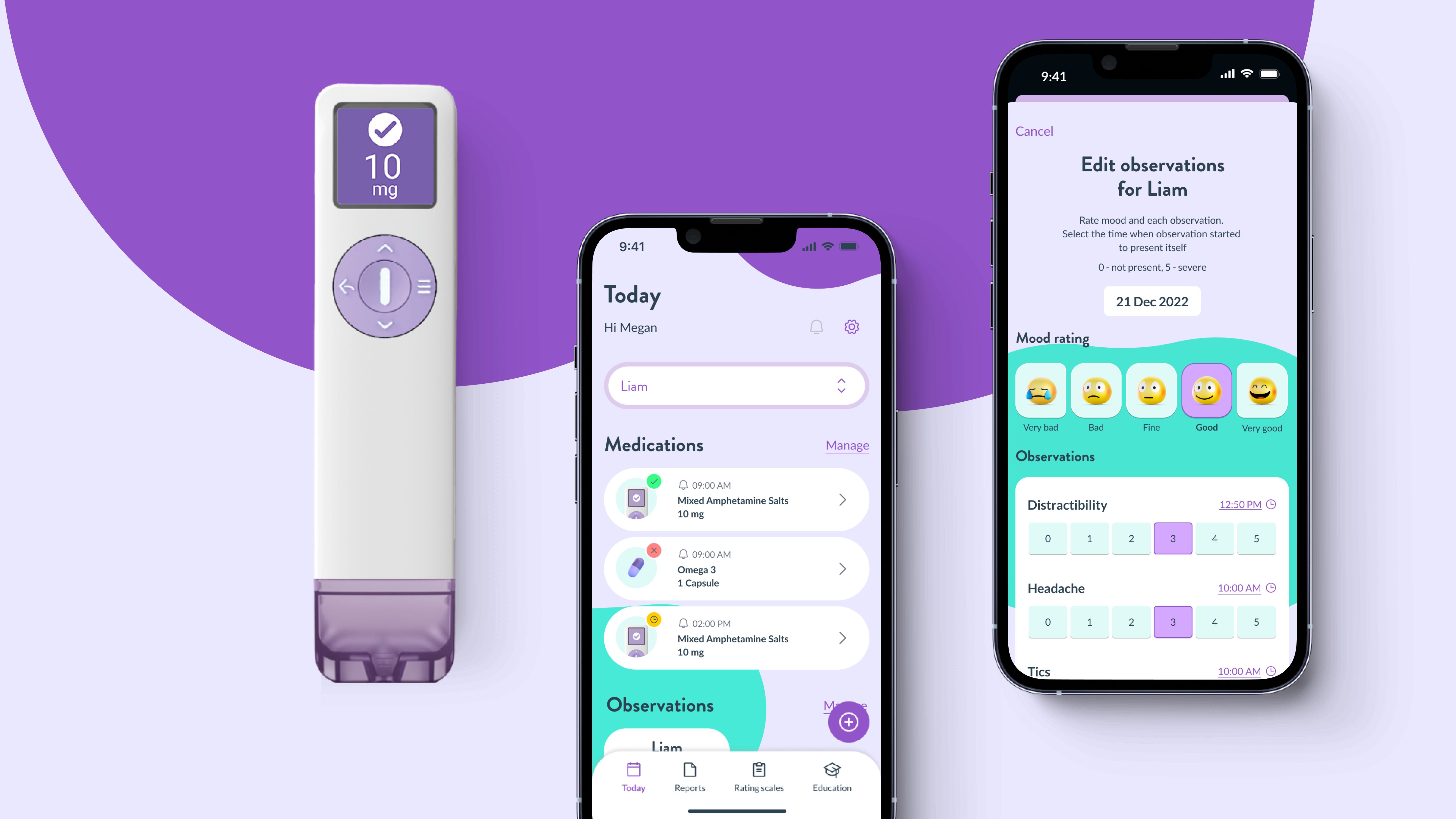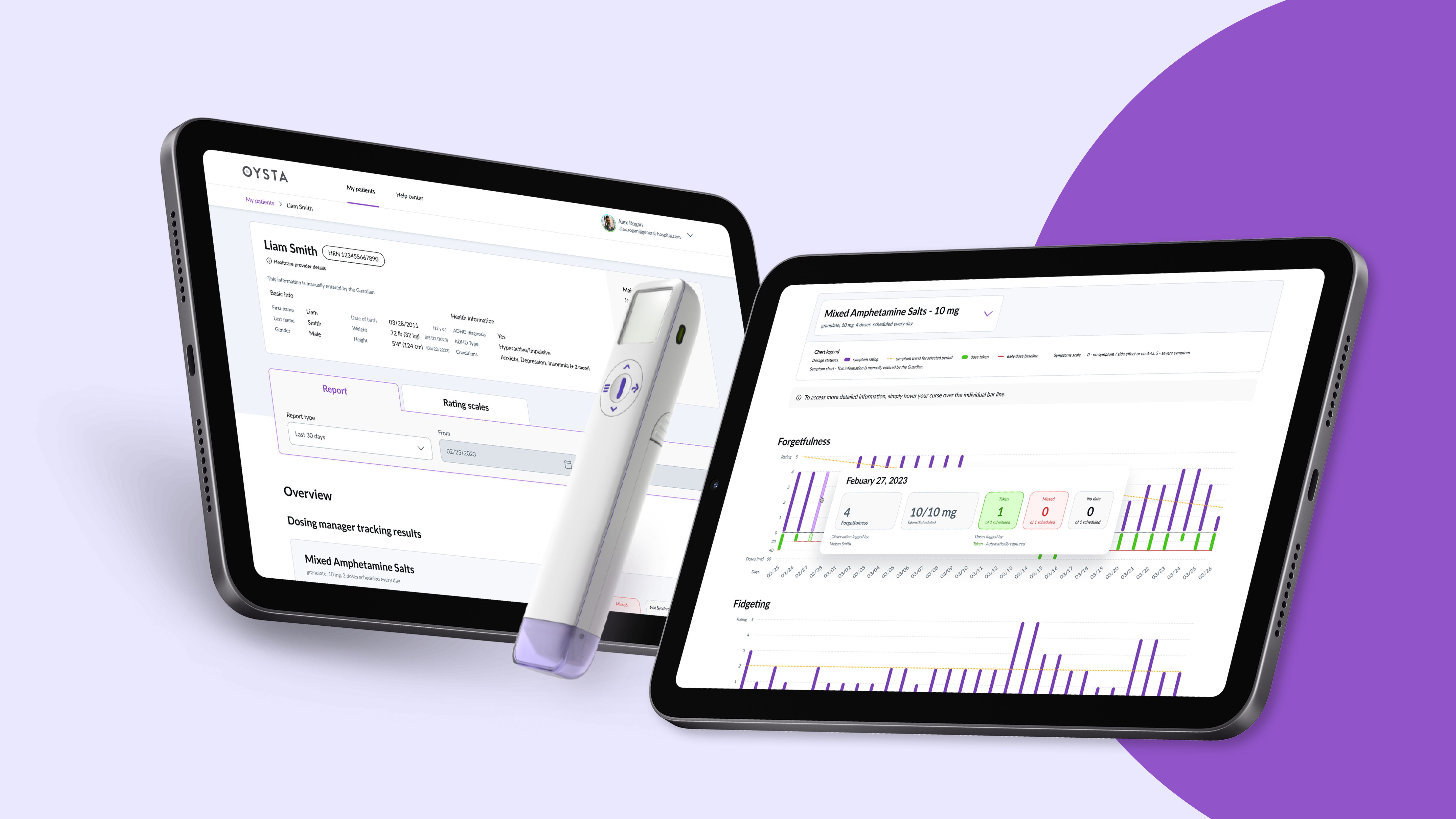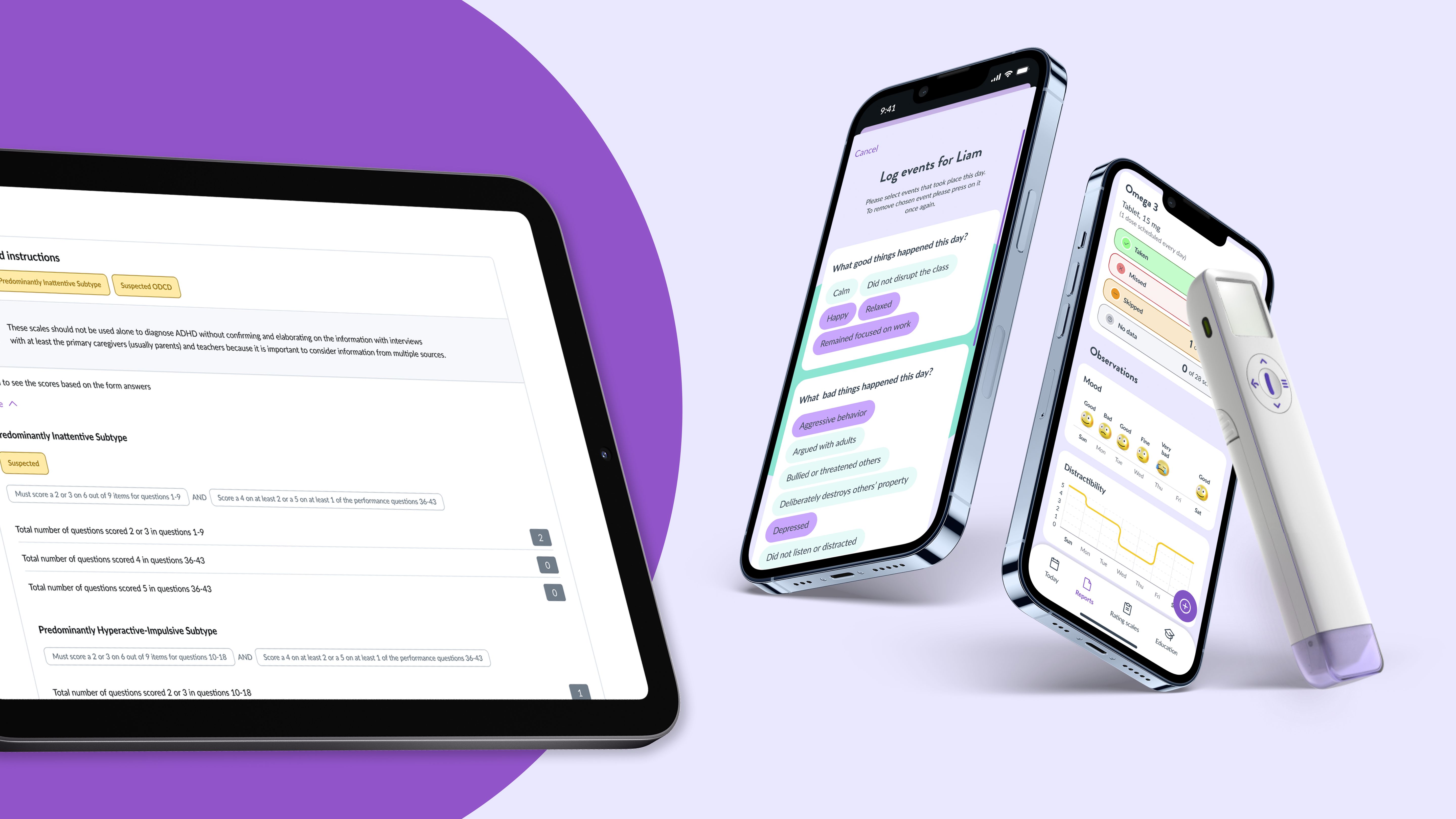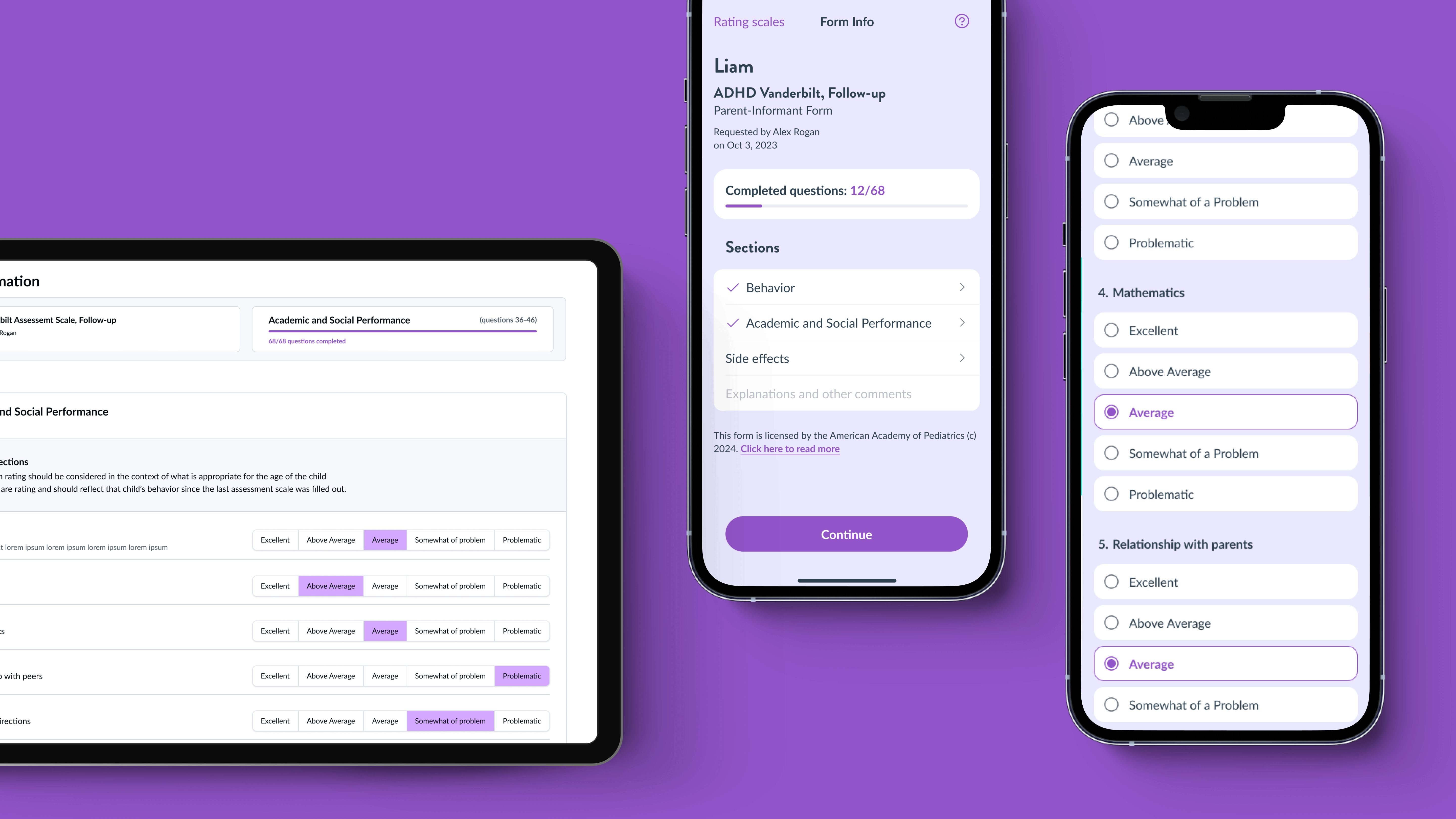
Designers
Agnieszka Billewicz, Aili Larusson, Maciej Jasicki, Valery Loboda, Aleksandra Straczek, Tomasz Trefler, Ferdinado Valenti
Year
2024
Category
Product
Country
Sweden
Design Studio / Department
Star
»OYSTA drives a holistic approach to ADHD care by connecting patients, caregivers, and medical professionals through data, enabling informed and personalized care. It excels in consolidating diverse data points and uses standardized scales to quantify patient progress. This scalable approach prioritizes personalized care, moving beyond one-size-fits-all solutions. Integrating standardized assessments and progress tracking empowers caregivers to offer better support, enhancing patient well-being.«
Michelle Castañeda and Sofia Ryan
And the award goes to...

Three questions for the project team
What was the particular challenge of the project from a UX point of view?
The project faced a complex UX challenge of bridging the communication gap between healthcare professionals, children, their guardians, and teachers. While all these stakeholders are part of the circle of care, their current interactions are often infrequent, lacking data, and based on paper forms.
While creating the digital ecosystem, we invested considerable time and effort in defining the right roles and data to share. We had to integrate seamlessly into the existing clinical workflow of healthcare professionals and the busy lifes of parents and teachers. We focused on achieving the right balance of detail and clarity, iterating on the rating scales and data visualization.
What was your personal highlight in the development process? Was there an aha!-moment, was there a low point?
The initial user research phase was one of the most intense yet rewarding aspects of the project. We interviewed families and healthcare professionals across the USA, often witnessing everyday struggles, busy breakfasts, and after-school conversations. We realized that the problem, while appearing simple on the surface, was complex beneath. Seeing it from different perspectives, including those of children, was enlightening.
For example, the initial project concept targeted families and physicians only. During our research, we realized the significant role teachers play in the titration process. This was our biggest 'aha' moment, leading us to include teacher-facing features.
Where do you see yourself and the project in the next five years?
In the next five years, Oysta Digital Service aims to revolutionize the management and support of children with ADHD in the USA. By 2025, we anticipate receiving FDA approval, paving the way for a commercial release in 2026. With 6 million children currently diagnosed with ADHD, our goal is to impact 1 in every 5 children, transforming their daily lives and interactions.
Our innovative platform will enhance communication between parents, physicians, and teachers, who currently only interact every 60 to 90 days through face-to-face visits and paper-based forms. Oysta Digital Service will facilitate weekly or even daily check-ins, allowing for real-time monitoring and feedback, improving treatment outcomes and adherence to care plans.


